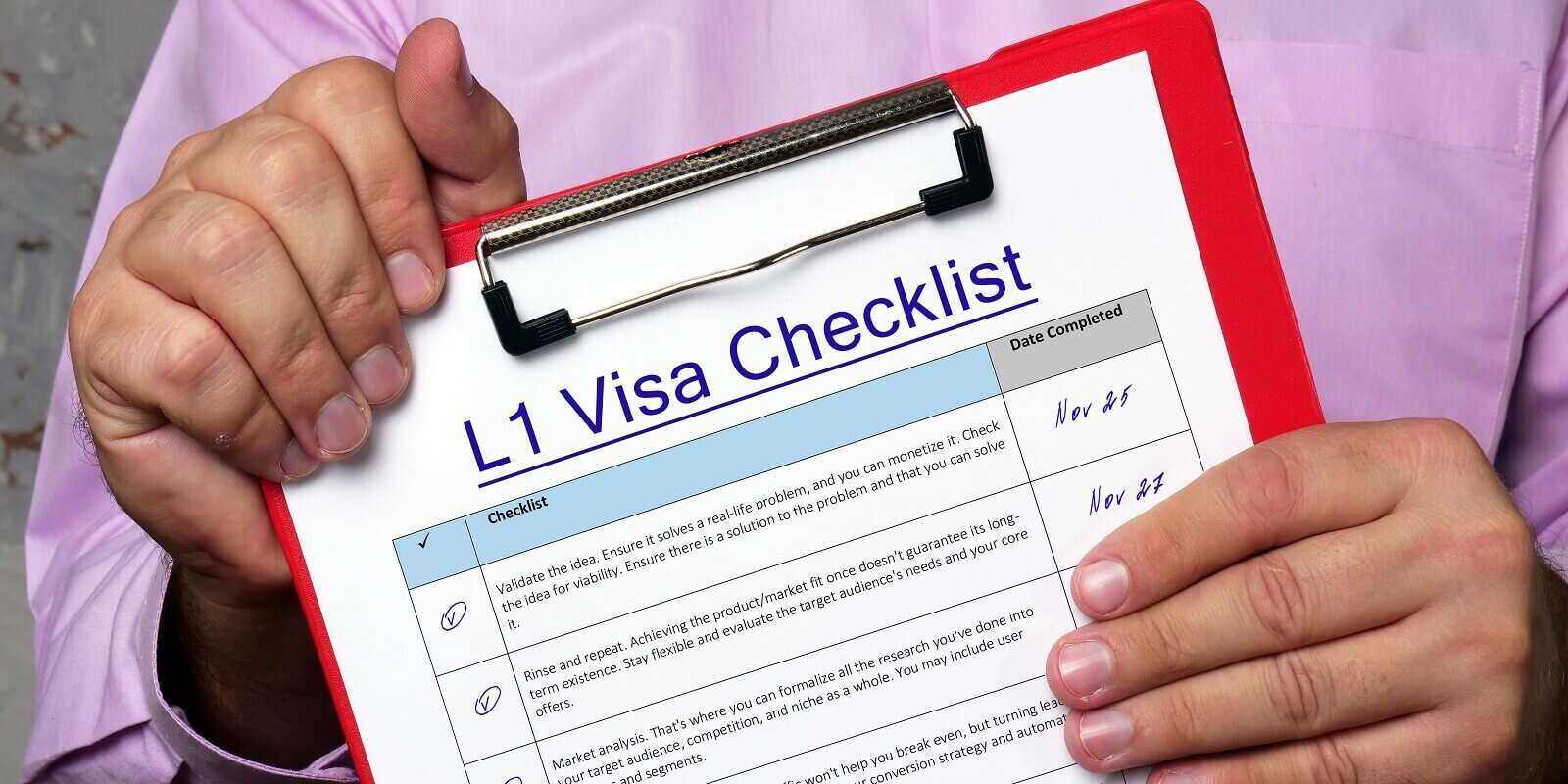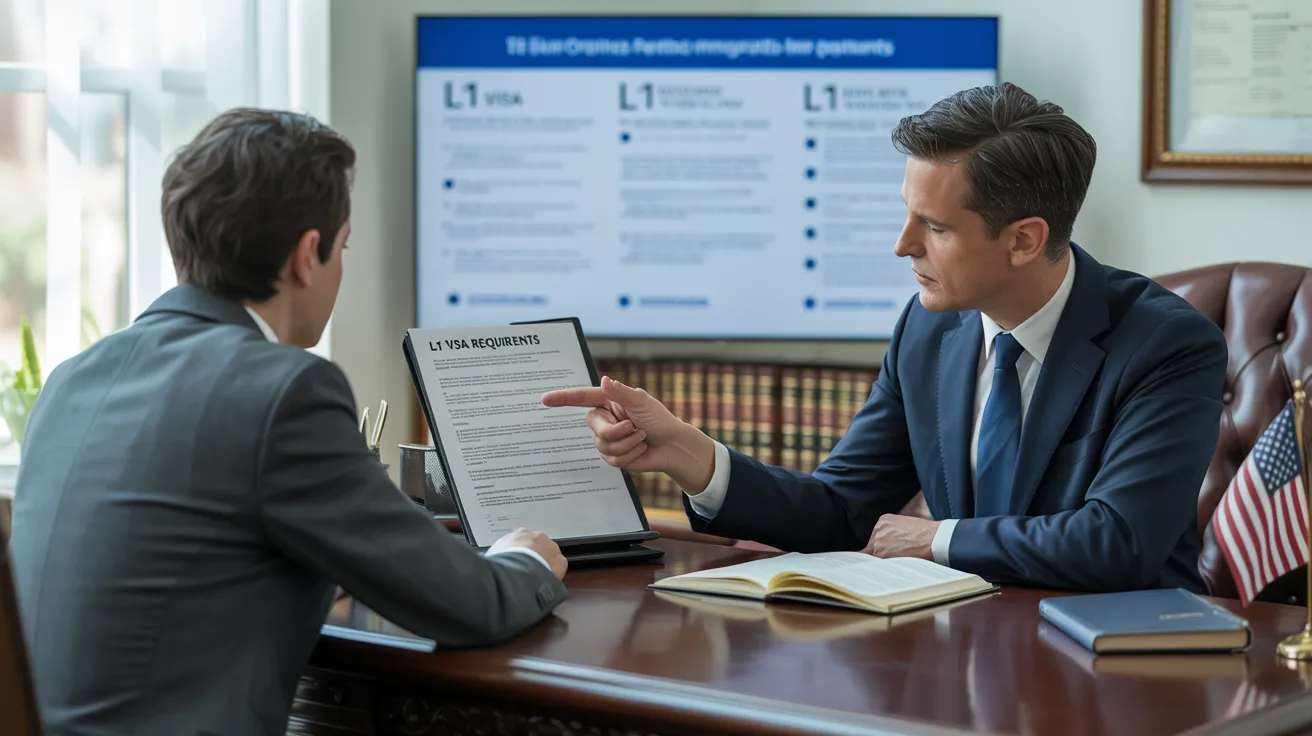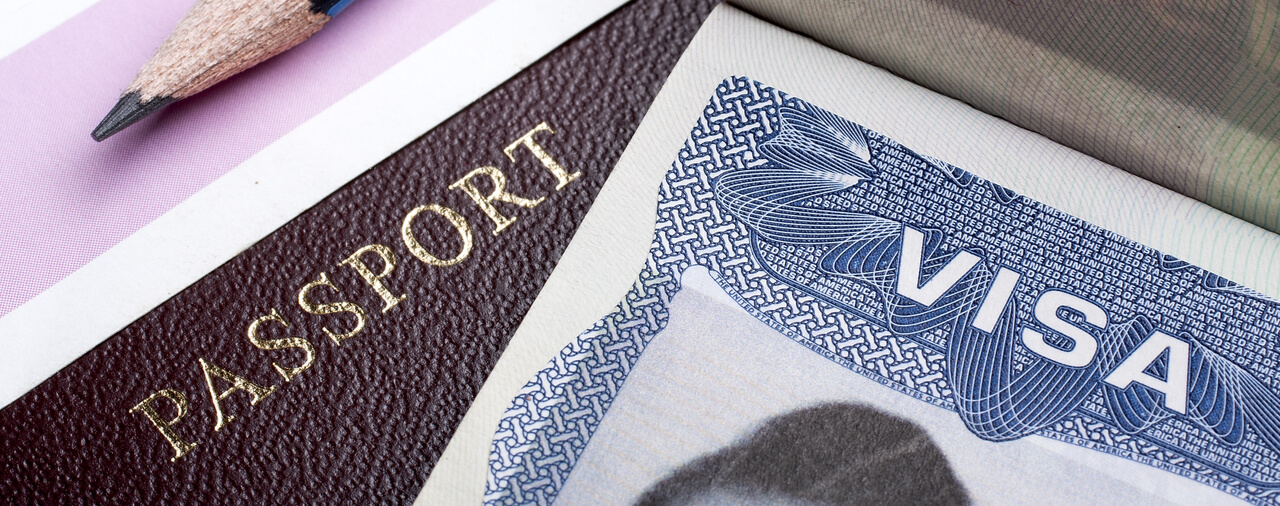L1 Visa for Investors
Opening Opportunities: A Comprehensive Overview to the L1 Visa Process
The L1 visa process provides an important path for international companies seeking to transfer key workers throughout boundaries. Recognizing the nuances of qualification standards, the distinctions in between L-1A and L-1B visas, and the complexities of the application procedure can substantially impact an applicant's success. Navigating this complex landscape is not without its difficulties, and careful interest to paperwork and company sponsorship is important. As we explore the essential elements of this procedure, the strategies for conquering prospective barriers will certainly come to be obvious, exposing just how informed prep work can open up a globe of opportunities.
Understanding the L1 Visa
Comprehending the L1 visa entails identifying its relevance as an essential tool for international companies looking for to transfer skilled workers between global workplaces. This non-immigrant visa classification assists in the movement of execs, supervisors, and specialized understanding employees to the USA, thus allowing companies to keep functional continuity and harness worldwide ability successfully. The L1 visa is split right into two key classifications: L-1A for managers and execs, and L-1B for employees having specialized knowledge.The L1 visa offers an important role in enhancing a business's competitive edge in the global industry - L1 Visa Requirements. By permitting business to relocate their vital personnel, organizations can assure that vital projects are handled by qualified individuals who are currently aware of the company's culture and functional procedures. This internal transfer system not just promotes expertise sharing yet also promotes innovation and cooperation across borders.Moreover, the L1 visa is usually favored for its reasonably uncomplicated application process contrasted to various other visa groups, as it permits twin intent, permitting holders to go after permanent residency while on a short-term job visa. This function makes the L1 visa especially appealing for both companies and workers, as it streamlines the pathway for proficient professionals to establish long-lasting residency in the USA
Qualification Criteria
Eligibility for the L1 visa rests on several crucial standards that guarantee both the employee and the employer fulfill details certifications. This non-immigrant visa is developed for multinational firms to transfer employees from consular services to united state counterparts.Firstly, the employer must be a qualifying organization, that includes a parent firm, branch, associate, or subsidiary of a united state service. The firm must have been doing organization for a minimum of one year both in the united state and abroad. This guarantees that the company has enough operational security and a reputable presence.Secondly, the staff member needs to hold a managerial, exec, or specialized knowledge placement. For L1A visas, the candidate needs to show managerial or executive credentials, while L1B visas concentrate on specialized knowledge pertaining to the organization's products, services, or processes. In addition, the worker needs to have helped the international entity for at the very least one constant year within the last three years prior to their application.Lastly, the employee's function in the U.S. need to align with their previous placement, guaranteeing that their abilities and knowledge are leveraged for the firm's benefit.
Types of L1 Visas
The L1 visa category comprises 2 main types developed to assist in the transfer of workers within international companies: the L1A visa for supervisors and execs, and the L1B visa for employees with specialized knowledge. Each type serves distinct objectives and has specific qualification criteria.The L1A visa is tailored for individuals who hold managerial or executive placements within a company. This visa allows high-level staff members to transfer to a united state branch, subsidiary, or affiliate of the exact same company. Applicants for the L1A visa need to demonstrate that they have been utilized in a supervisory or executive ability for at the very least one constant year within the previous three years prior to their application. In addition, this visa supplies a longer period of stay, initially given for 3 years, with the opportunity of extensions for as much as seven years.In comparison, the L1B visa is planned for professionals with specialized expertise pertaining to the firm's products, solutions, or processes. To certify, applicants have to confirm that their know-how is important to the organization and that they have worked for a minimum of one continual year within the last 3 years in a duty that required this specialized knowledge. The L1B visa is at first provided for 3 years, with expansions offered for as much as 5 years.Both visa kinds are important for firms looking for to boost their international operations by leveraging skilled employees, consequently promoting advancement and effectiveness within the U.S. market.
Application Process
Steering through the L1 copyright procedure involves a number of essential steps that must be meticulously followed to guarantee a successful result. The procedure begins with the U.S. company, who must first develop qualification by demonstrating a qualifying connection with the international entity and verifying that the worker satisfies the specific requirements for the L1 visa category being sought.Once eligibility is verified, the employer starts the procedure by submitting Form I-129, the Petition for a Nonimmigrant Worker, with the U.S. Citizenship and Migration Services (USCIS) This kind must be accompanied by a detailed description of the task responsibilities to be performed, the business framework of both the U.S. and international entities, and the worker's qualifications. It's vital to validate that all information is accurate and full, as omissions or mistakes can result in delays or denials.Upon approval of the I-129 request, the next action entails the worker looking for the L1 visa at an U.S. embassy or consular office in their home country. This phase needs the conclusion of Type DS-160, the Online Nonimmigrant copyright, and scheduling an interview. Throughout the interview, the candidate must present proof sustaining their qualifications and the employer's petition.After the visa is given, the employee can enter the USA to operate in the assigned function. In general, careful preparation and adherence to each action of the application process are important for a successful L1 visa outcome.
Called for Documents

Vital Forms Needed
Maneuvering the L1 Visa process calls for cautious focus to the essential forms and documentation necessary for an effective application. The primary type needed is the Kind I-129, Petition for a Nonimmigrant Worker, which need to be completed and sent by the U.S. employer. This kind details the details of the work deal and the credentials of the worker seeking the L1 Visa.Alongside Type I-129, the applicant will need to complete Form I-539 if going along with relative are also requesting visas. In addition, the company has to give evidence of the certifying partnership between the U.S. entity and the international entity, commonly demanding the entry of company records such as short articles of incorporation or financial statements.Moreover, it is vital to consist of the L Classification Supplement to Type I-129, which specifies the kind of L Visa being asked for-- either L-1A for supervisors and execs or L-1B for workers with specialized understanding. Candidates ought to assure that all forms are authorized and dated appropriately, as insufficient submissions can lead to hold-ups or rejections. Effectively setting up these important kinds lays the structure for a smoother L1 copyright procedure.

Supporting Proof Requirements
Sustaining documentation is vital for an effective L1 copyright, as it validates the insurance claims made in the request. Candidates have to supply a variety of files to show qualification for the visa, which is classified right into 2 key types: evidence of the qualifying partnership in between the U.S. and foreign entities and proof of the candidate's qualifications.To establish the partnership, candidates ought to submit documents such as corporate business graphes, monetary statements, and proof of possession. These files validate that the international firm has a certifying connection with the united state employer, whether as a moms and dad business, subsidiary, branch, or affiliate.For the applicant's qualifications, vital records include an in-depth work letter from the international company, describing the candidate's job title, duties, and period of work. Furthermore, academic credentials, such as levels and diplomas, ought to be given to show the candidate's competence in the relevant field.
Employer Sponsorship Files

Typical Challenges
Navigating the L1 visa procedure presents a number of common difficulties that applicants need to know. Secret issues usually include rigid documents needs, prospective hold-ups in processing times, and the need for rigorous lawful conformity. Recognizing these obstacles can help applicants much better prepare and reduce dangers during their copyright trip.
Documentation Needs
The L1 copyright procedure commonly presents considerable difficulties connected to paperwork requirements. Candidates need to supply considerable documents to establish qualification, which can result in confusion and possible delays. Key documents consist of evidence of a certifying relationship between the U.S. and foreign employer, evidence of the candidate's work history, and detailed information concerning the task duty in the U.S.One typical difficulty is collecting adequate evidence to show the nature of the qualifying partnership. Companies usually have a hard time to present clear organizational charts or economic declarations that highlight the connection in between the entities. On top of that, making certain that letters of assistance from companies precisely mirror the candidate's work duties and certifications is essential, as obscure descriptions can lead to denials.Another issue develops from the need for comprehensive task summaries that align with the L1 visa categories. Candidates have to express not just their existing function but also their managerial or customized understanding responsibilities clearly. This demands a complete understanding of both the applicant's setting and the governing language utilized in L1 applications.
Handling Time Delays
Experiencing delays in handling times is a common difficulty faced by L1 visa candidates, usually resulting in disappointment and uncertainty. A number of variables contribute to these delays, including high application quantities, enhanced scrutiny of applications, and administrative stockpiles within the united state Citizenship and Immigration Provider (USCIS) Applicants may discover that handling times can differ considerably depending upon the solution center handling their application, as learn more each facility has its very own workload and efficiency levels. Furthermore, the complexity of the applicant's situation, such as the requirement for substantial documents or clarification, can better expand wait times.In some instances, problems connected to the candidate's existing immigration standing or previous visa background may additionally bring about additional hold-ups, as USCIS might call for more testimonial or information. It is essential for candidates to stay positive during this period, preserving open communication with their companies and legal representatives to resolve any kind of possible problems promptly.Understanding these processing time difficulties can assist L1 visa applicants get ready for feasible delays and minimize the effect on their shift and job plans. Persistence and persistance are crucial virtues in maneuvering this elaborate process.
Lawful Compliance Issues
Lots of L1 visa candidates come across lawful conformity problems that can complicate their journey towards acquiring the visa. Recognizing and adhering to the particular guidelines set by the U.S. Citizenship and Immigration Solutions (USCIS) is essential. Typical difficulties include showing the certifying partnership between the foreign and U.S. companies, as well as proving that the candidate has the requisite specific expertise or supervisory capacity.Additionally, candidates should supply thorough documents detailing their work duties, business structure, and economic practicality of the united state entity. Inadequate or incorrect documentation can lead to hold-ups or perhaps rejections. Employers should likewise guarantee that they abide with labor regulations, consisting of wage and working problem standards, which can influence visa eligibility.Another typical concern entails preserving conformity with the terms of the visa as soon as granted. Modifications in employment status, work responsibilities, or firm framework can require changes to the visa, which if not addressed without delay can cause legal issues. As a result, staying notified about conformity needs and seeking lawful counsel when needed is important to navigate the intricacies of the L1 visa process efficiently.
Tips for Success
Success in the L1 copyright process often hinges on careful preparation and interest to information. To improve your chances of approval, start by thoroughly understanding the qualification requirements for both the L1A and L1B visa groups. Assess whether your placement at the company qualifies as supervisory, executive, or specialized understanding, as this categorization significantly impacts your application.Next, collect comprehensive documentation that substantiates your claims. This consists of business charts, comprehensive work summaries, and evidence of the company's functional framework. Clear and concise evidence of the qualifying relationship in between the U.S. entity and the international entity is vital. Confirm that all files are arranged logically and offered in an expert fashion, as this shows your commitment and seriousness concerning the application.Engage the services of a skilled migration lawyer that focuses on L1 visas. Their competence can prove vital, guiding you with facility guidelines and assuring that all paperwork abides by existing laws. Additionally, get ready for the interview by exercising response to typical questions and preparing to review your function and payments to the firm comprehensive.
Often Asked Concerns
Can Family Members Accompany the L1 Visa Owner?
Yes, member of the family of L1 visa holders, consisting of spouses and unmarried children under 21, can go along with the primary visa owner. They may likewise apply for L2 visas, which enable them to live in the United States.
For How Long Can I Remain On an L1 Visa?
The L1 visa permits first keeps of up to three years, with the possibility of expansion. L1A visa owners may remain for an optimum of 7 years, while L1B visa holders can continue to be for five years.
Can L1 Visa Owners Apply for an Environment-friendly Card?
Yes, L1 visa owners can use for an eco-friendly card. L1 Visa Requirements. They may go after long-term residency via employment-based classifications, generally calling for sponsorship from their company, provided they fulfill the necessary certifications and documents needs
What Happens if My L1 copyright Is Rejected?
If your L1 copyright is rejected, you may obtain a notification describing the factors for denial. You can seek to appeal the decision, reapply, or check out alternate visa choices based upon your circumstances.
Are There Any Type Of Traveling Limitations With an L1 Visa?
An L1 visa typically enables global travel; nevertheless, re-entry to the U. L1 Visa Requirements.S. rests upon preserving legitimate status. Tourists should guarantee conformity with visa conditions to avoid complications upon return
Final thought
